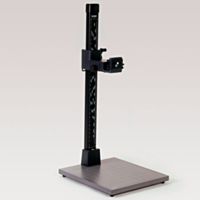Jargon Buster: A guide to photographic printing terms

To the average person, paper is paper. However, to some – photographers and designers to name a few – one sheet of paper varies hugely from another. As most photographers know, seeing your final image in print is a truly rewarding moment, and the paper it’s printed on, as well as the ink you use, plays a big role in the final outcome of your hard work. Print on the wrong paper or with the wrong ink and the aspects of your photograph that gave it impact in its digital form can easily be lost.
If you’re new to printing your photos, or you simply aren’t well versed in all the kinds of papers available, the terms used can be baffling. While the kind of paper you choose to print on is a matter of choice, you might find yourself disappointed after making the ‘wrong’ decision for your print. To make that decision easier, we’ve defined some of the key terms you’re likely to come across when searching for the perfect paper to pair with your print.
A guide to photographic printing terms What’s the difference between fine art paper and photo paper?
Fine art paper
Fine art paper is usually acid free and 100% cotton rag, but the content can vary based on the paper’s purpose. Compared to photo paper, fine art paper is thicker and, as an archival paper, can last for decades. It is also important to note that, despite the paper’s finish – Fotospeed offer both matte and glossy papers – fine art papers offer a reduced glare and can be displayed behind glass. Because of these things, fine art paper is considered very high quality and is usually used by professional photographers, especially in display.
Photo paper
Photo papers, like the Fotospeed Photo Quality range, are the standard paper choice for every day photo printing. Photo paper is good quality paper, though not necessarily archival, meaning a print might not last as long as it would on fine art paper, and consists of your different finishes, including lustre, glossy, and matte.

What’s the difference between different paper finishes?
Glossy Finish
Glossy paper is usually characterized by a smooth, reflective surface created by a chemical coating. The smooth finish helps offer the widest colour range and best resolution, so if you’re looking for a dramatic look, glossy paper is a good choice as it heightens the contrast and draws more attention to details. However, it’s important to bear in mind that the glare will make a glossy print difficult to see at certain angles and in certain lighting conditions. Lustre/pearl/semi-gloss Semi-gloss papers – sometimes called ‘lustre’ or ‘pearl’ – are popular with professionals as they offer the best of both worlds when it comes to print. Unlike glossy paper, lustre is slightly textured, but also offers the high colour saturation associated with glossy prints. This texture minimizes glare and makes the paper more durable and resistant to fingerprint smudges. These papers are therefore a good choice for when you want long-lasting but dramatic results.
Matte Finish
Matte paper is more textured than lustre or gloss paper. This texture deflects light, and reduces glare. Because of this, matte prints are easier to view in almost all light conditions and angles. In addition to this, it is important to note that more ink is absorbed by matte paper. This makes matte paper ideal for black and white prints, or where a slightly hazy look is preferable. Because of the matte finish, this kind of paper has a higher resistance to fingerprints, also making it ideal for photos that are likely to be handled outside of a frame or photo album.
As with most printing options, the best solution is often a matter of choice, as well as trial and error. Remember, there is also variation within paper types – some matte papers might be more textured than others, and some glossy papers also have some texture. To find out what is right for your shot, try printing it on different types of paper before you print off your final print. Fotospeed offer test packs of papers in our different ranges to make it easier to find which of our papers is best for you.
If you need more printing advice, why not check out our support page, or keep an eye out for our next jargon buster on inks. For more information, click here.
If you would like to stay on top of all the latest information from Fotospeed don't forget to sign up to our Newsletter.










